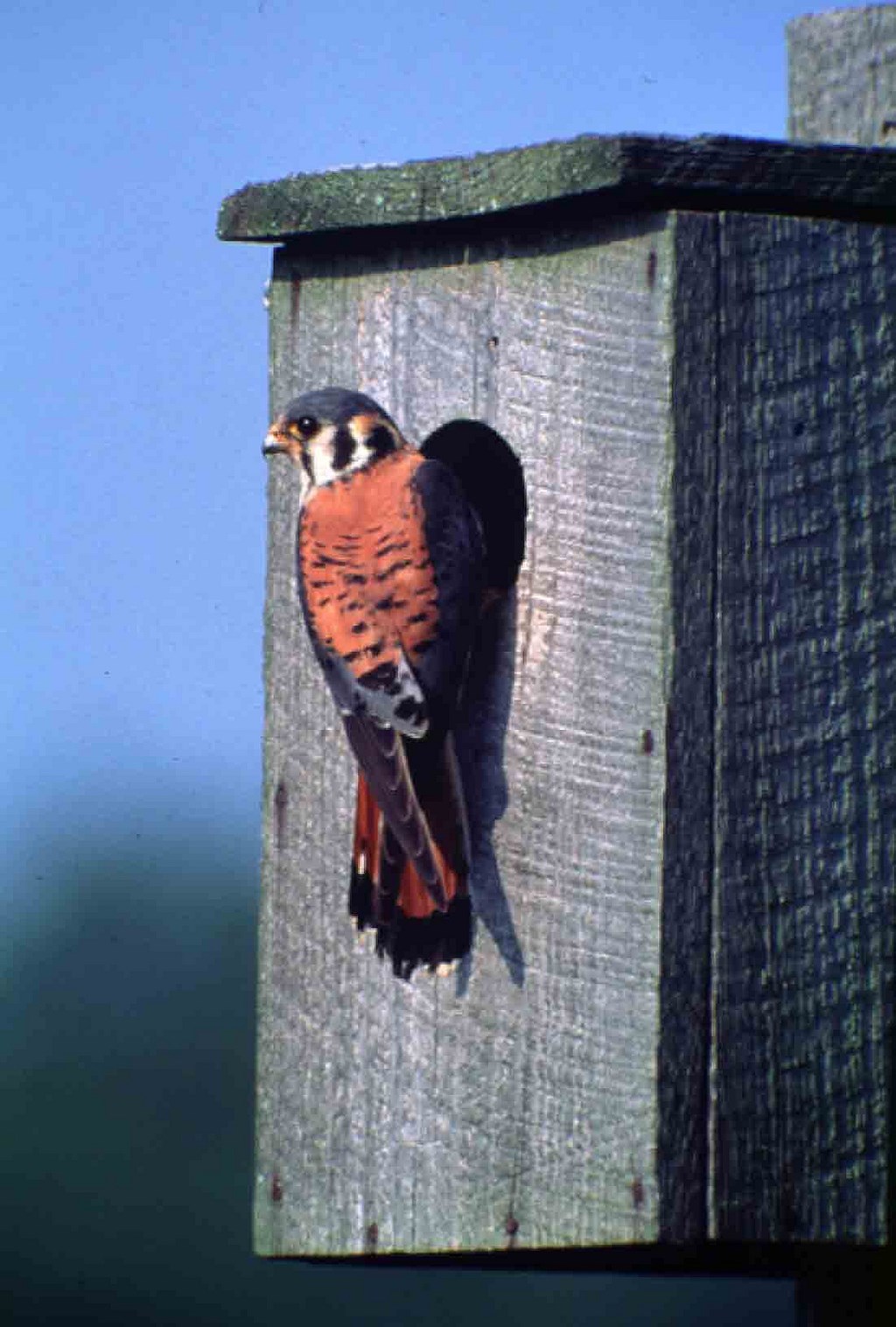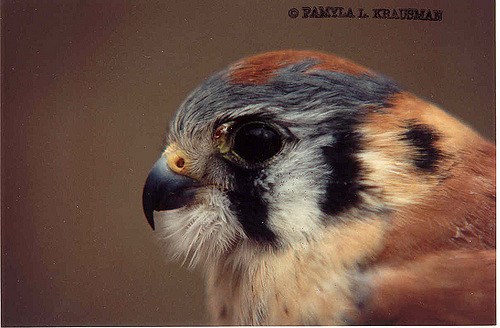Kestrel Update: In the Sanctuary’s Backyard and Beyond
Posted on December 17, 2018 in Science

Summer 2018 was a difficult year for breeding American kestrels in the Hawk Mountain region. Of our 117 monitored nest boxes, only 34 were occupied, the lowest occupancy rate since the program’s first precise records in 1992. Of these 34 pairs, 22 successfully raised at least one chick to fledgling.
With numbers like these, it can be difficult to feel optimistic about the well-being of this charismatic species, given that they have been in decline for over a decade. However, the low occupancy rate this season does not necessarily confirm a similar trend for next year, and with challenging weather patterns this past summer, our fingers are crossed for better results in 2019.
On the positive side, average laying date, clutch size, and number of nest failures were within the margin of what we typically see. Additionally, counters at North Lookout observed more migrating kestrels this year than the 10-year average, with a total of 426 compared to the average of 406.
One important aspect of last season’s results is that once a pair had established themselves within a box, their ability to raise young was no different than in other years. What was troubling was how few individual kestrels were returning to use nest boxes in the first place. This implies literal trouble in paradise. In other words, if the issue is not occurring inside the breeding grounds than we must investigate the conditions kestrels are facing during the rest of the year. This requires us to look at their annual cycle, in places near and far to Hawk Mountain.
We still have a great deal to learn about kestrels, and we are excited about several partnerships that may shed light on the primary causes for their struggle and ways in which we can counter them. One of the ways that we are contributing to this conversation is through a recent paper submitted by an extended group of experts (including our own senior biologist Dr. JF Therrien) looking at the vital rates of kestrels from Idaho, Florida, New Jersey, and Hawk Mountain. In other words, this study looked into the factors that have a significant effect on population dynamics of kestrels such as survival of young and adults, as well as reproduction output of females.

We are also excited about upcoming partnerships directedly related to reproduction studies. One such collaboration with Jen Houtz, a former Hawk Mountain trainee and current PhD student at Cornell’s Lab of Ornithology, will allow us to learn more about the gut microbiomes of kestrels (thought to have a potentially significant impact on the ability of certain animals to reproduce successfully, including humans). We are also partnering with Dr. Allison Cornell of Cedar Crest College in order to gain a more holistic understanding of kestrel chick physiology.
Additionally, we are partnering with the Peregrine Fund by contributing to the American Kestrel Partnership. The aim of this project is to increase our understanding of kestrel populations across the country through submission of data that can be used in assessments of kestrel genetics, population dynamics, and other aspects of kestrel biology that remain a mystery. By combining our local outreach as a Sanctuary with efforts to further understand the global picture, we feel we can take larger steps forward in helping the species as a whole. This is where the benefit of partnerships shines through. As they say, it takes a village, and Hawk Mountain is happy to be part of a community that is thinking “outside the box” to help these birds.
There are several take home messages from these updates. First, there are many factors affecting kestrel population dynamics, including but not limited to overall physiology of the birds, their microbiomes, as well as their likelihood of survival during the winter season. Secondly, the American kestrel needs your support now more than ever. With more resources Hawk Mountain can do the following:
- Initiate movement ecology studies to better understand its annual cycle.
- Finance lab tests (including genetics testing).
- Continue the precise monitoring of our current nest box network.
- Expand partnerships.
Enhance outreach efforts on the status and importance of this tiny falcon.
We would like to extend a sincere thank you to all who have assisted with and supported our kestrel work in the past, and we are excited to welcome many more kestrel enthusiasts in the future. Together, let’s change the future for this beautiful bird.
Learn more about our Adopt-a-Kestrel Nestbox program, a great last-minute holiday gift idea for the conservationist or nature lover in your life.